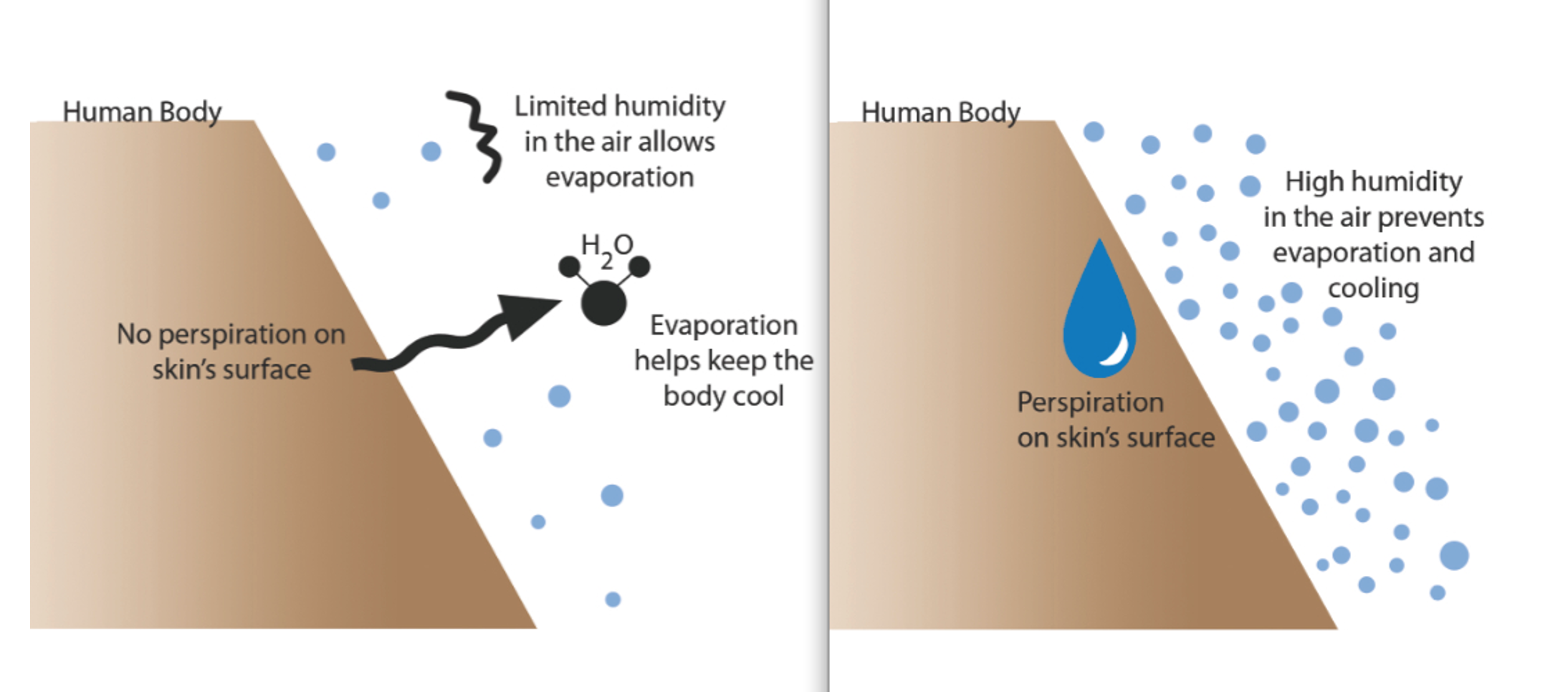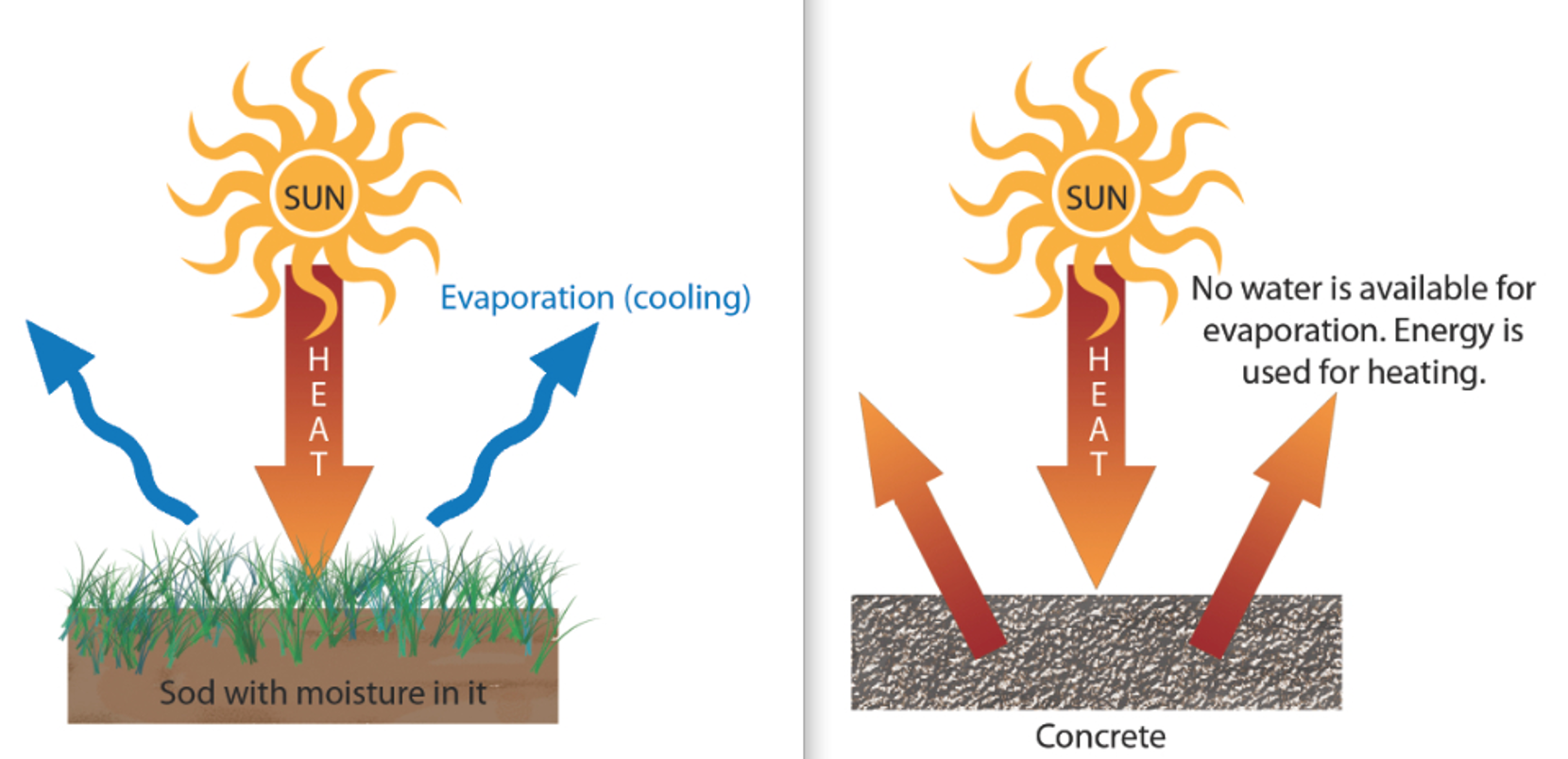Introduction
/https://siu.edu/search-results.php
Last Updated: Oct 02, 2025, 03:02 PM
Although there is no universally accepted definition of the term heat wave, it is commonly used to describe extended time periods of abnormally warm air temperature. More specifically, it is when heat stress (body’s difficulty in regulating temperature) is elevated. Heat wave conditions usually impact large regions (e.g., the Midwest); however, within the affected region, there can be large variations in the heat index due to differences in land surface characteristics. Most commonly, cities experience more severe heat index values due to the urban heat island effect, an increase in temperatures in urban areas that results from the abundance of non-natural surface and building materials (see Figure 1). In some cases, the urban heat island effect can add several degrees to the air temperature and heat index resulting in substantially higher heat stress. Coupled with high population density, and often, poor living conditions, the urban heat island effect makes cities considerably more vulnerable to heat waves than surrounding rural areas.

Figure 1. A schematic of rural (left) and urban (right) landscapes depicting one contribution to the urban heat island effect. In the rural environment, moisture is present at the surface, either in the soil or transpired by plants. In contrast, surface moisture is deficient in the urban environment. If moisture is present (rural), available energy will go toward evaporation rather than warming of the air. The absence of surface moisture in urban areas, combined with retention of heat by urban building materials, results in elevated temperatures.
While extreme warm temperatures can cause heat stress, the effects are usually worsened by high humidity, which can vary considerably from place to place. This has led to the phrase “It’s not the heat, it’s the humidity.” The negative impacts of heat waves on people range from short-term behavioral change to serious health consequences and even death. So why is humidity an important component of heat stress? The importance of humidity is actually related to the process of evaporation. Because evaporation is a cooling process, the human body is able to use evaporation to regulate temperature by sweating. This is similar to the process that occurs when you get out of a swimming pool or shower. You initially feel cold, but after drying (removing the cooling influence of evaporation), you are more comfortable. This evaporation and cooling process can only occur if the air is sufficiently dry. When warm temperatures are coupled with high humidity, our ability to regulate body temperature through evaporation is limited (Figure 2). This can potentially result in heat stroke or death. Because of the importance of humidity for heat stress, extreme warm conditions are usually characterized by the heat index, a numerical measure that combines temperature and humidity into a single number that reflects heat stress.

Figure 2. When the air contains little water vapor (left), perspiration on the skin readily evaporates, cooling the skin and reducing heat stress. When the air contains large amounts of water vapor, evaporation of perspiration from the skin is limited, causing heat stress.
The July 1995 heat wave impacted the Midwest United States and resulted in more than 700 deaths in Chicago. In this exercise, you will examine different accounts (newspapers, excerpts from journal articles, etc) and assess how well they communicated the major contributors that caused a week of tragedy in Chicago: the urban heat island effect and the combination of heat and humidity. You will learn that the physical characteristics of heat waves described above only partially explain the overall impact of heat waves on humans. As you will also learn, preparation and response are important components of overall heat wave impacts. To understand heat waves and avoid their negative consequences, the physical and social conditions must be considered.